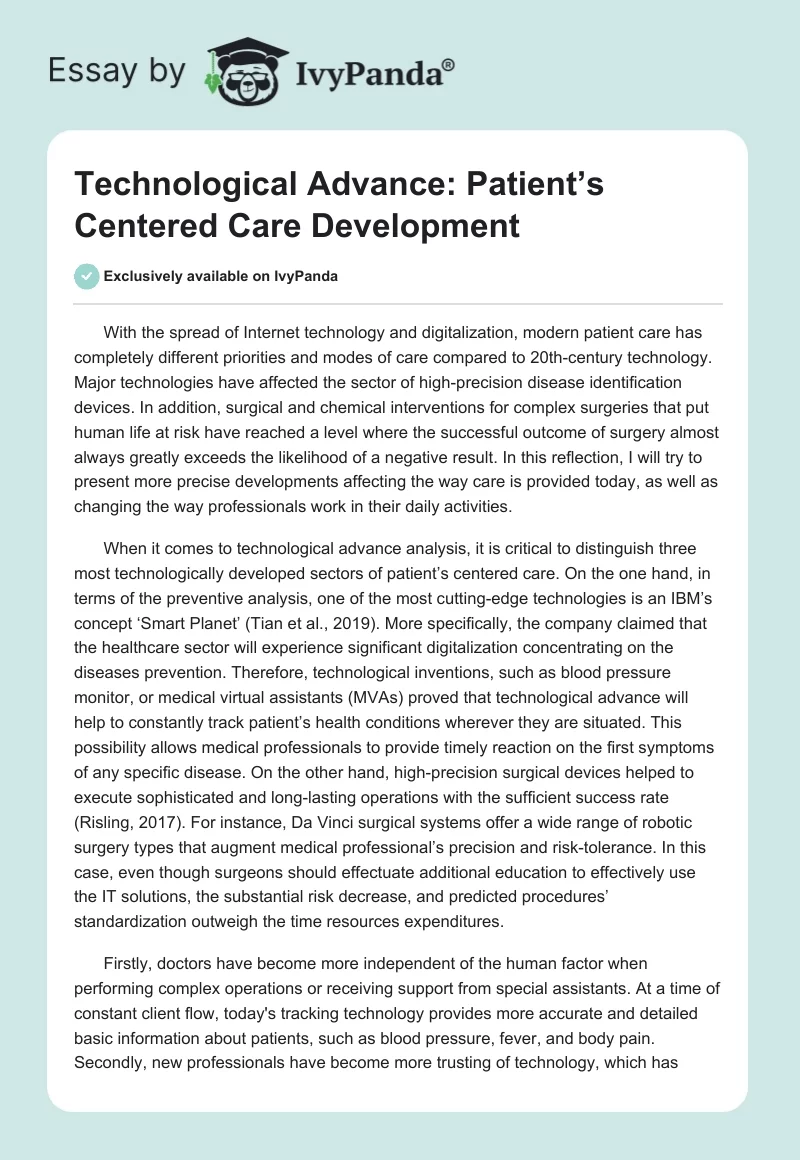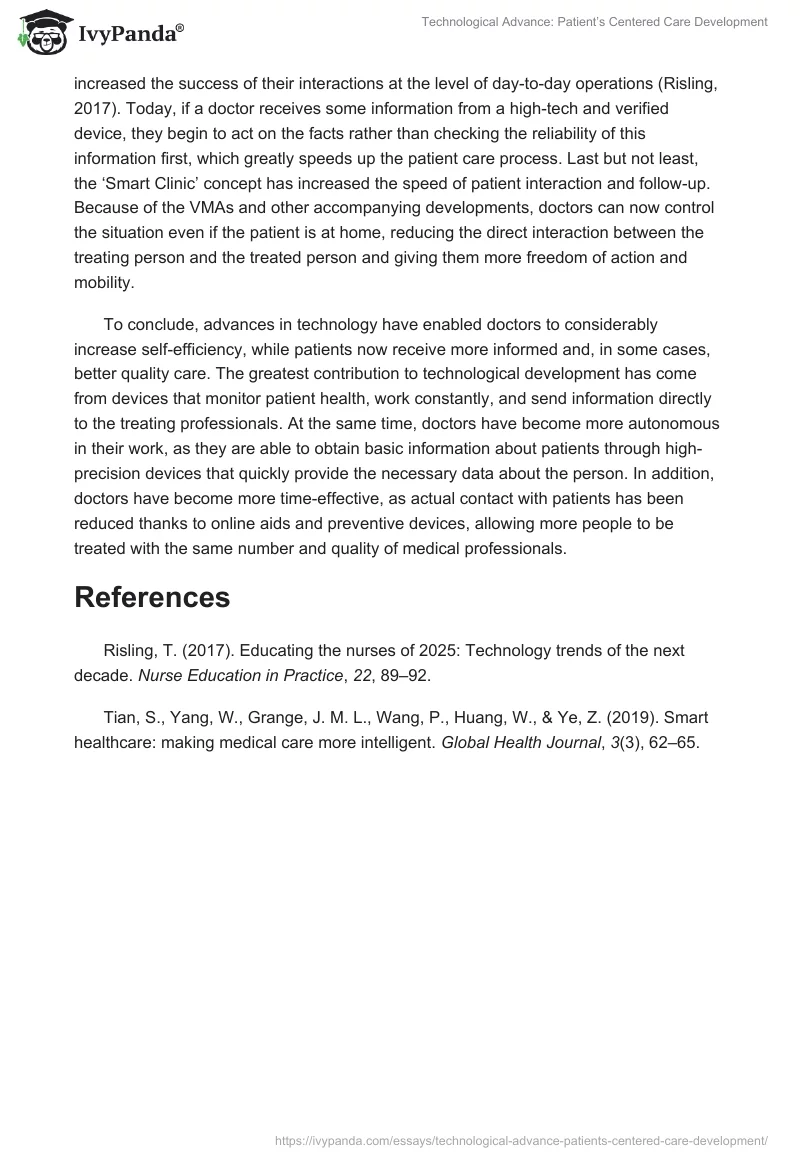With the spread of Internet technology and digitalization, modern patient care has completely different priorities and modes of care compared to 20th-century technology. Major technologies have affected the sector of high-precision disease identification devices. In addition, surgical and chemical interventions for complex surgeries that put human life at risk have reached a level where the successful outcome of surgery almost always greatly exceeds the likelihood of a negative result. In this reflection, I will try to present more precise developments affecting the way care is provided today, as well as changing the way professionals work in their daily activities.
When it comes to technological advance analysis, it is critical to distinguish three most technologically developed sectors of patient’s centered care. On the one hand, in terms of the preventive analysis, one of the most cutting-edge technologies is an IBM’s concept ‘Smart Planet’ (Tian et al., 2019). More specifically, the company claimed that the healthcare sector will experience significant digitalization concentrating on the diseases prevention. Therefore, technological inventions, such as blood pressure monitor, or medical virtual assistants (MVAs) proved that technological advance will help to constantly track patient’s health conditions wherever they are situated. This possibility allows medical professionals to provide timely reaction on the first symptoms of any specific disease. On the other hand, high-precision surgical devices helped to execute sophisticated and long-lasting operations with the sufficient success rate (Risling, 2017). For instance, Da Vinci surgical systems offer a wide range of robotic surgery types that augment medical professional’s precision and risk-tolerance. In this case, even though surgeons should effectuate additional education to effectively use the IT solutions, the substantial risk decrease, and predicted procedures’ standardization outweigh the time resources expenditures.
Firstly, doctors have become more independent of the human factor when performing complex operations or receiving support from special assistants. At a time of constant client flow, today’s tracking technology provides more accurate and detailed basic information about patients, such as blood pressure, fever, and body pain. Secondly, new professionals have become more trusting of technology, which has increased the success of their interactions at the level of day-to-day operations (Risling, 2017). Today, if a doctor receives some information from a high-tech and verified device, they begin to act on the facts rather than checking the reliability of this information first, which greatly speeds up the patient care process. Last but not least, the ‘Smart Clinic’ concept has increased the speed of patient interaction and follow-up. Because of the VMAs and other accompanying developments, doctors can now control the situation even if the patient is at home, reducing the direct interaction between the treating person and the treated person and giving them more freedom of action and mobility.
To conclude, advances in technology have enabled doctors to considerably increase self-efficiency, while patients now receive more informed and, in some cases, better quality care. The greatest contribution to technological development has come from devices that monitor patient health, work constantly, and send information directly to the treating professionals. At the same time, doctors have become more autonomous in their work, as they are able to obtain basic information about patients through high-precision devices that quickly provide the necessary data about the person. In addition, doctors have become more time-effective, as actual contact with patients has been reduced thanks to online aids and preventive devices, allowing more people to be treated with the same number and quality of medical professionals.
References
Risling, T. (2017). Educating the nurses of 2025: Technology trends of the next decade. Nurse Education in Practice, 22, 89–92.
Tian, S., Yang, W., Grange, J. M. L., Wang, P., Huang, W., & Ye, Z. (2019). Smart healthcare: making medical care more intelligent. Global Health Journal, 3(3), 62–65.


